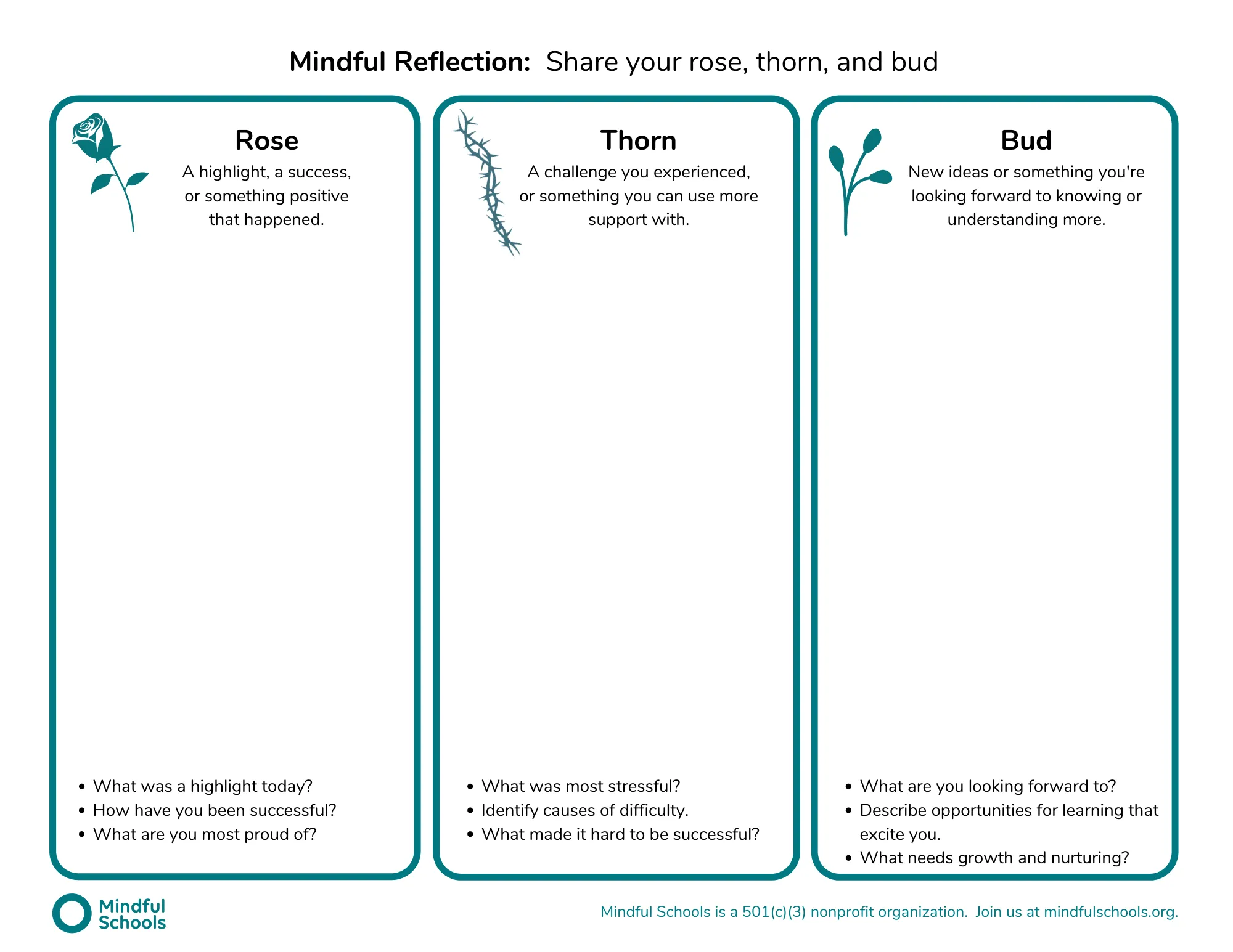
If you’re managing a process, as a Team Lead or Scrum Master, for a unit that tends to get polarized over thornier topics (no pun intended!), finding ways to unite the discussion about success and challenge is part of the ways you serve the group.
The Rose, Thorn, Bud retrospective format is a wonderful way for a process facilitator to balance out optimistic views with negative views inside the team and encourage the team to arrive at actionable next steps for the sprint to come.
Begin by bringing the group together, virtually or in-person, and introducing the premise of this retrospective format in detail to create shared understanding from the get-go.
Rose (10 minutes) – Encourage the team to start here, considering all of the highlights, successes, small or big wins or positive situations that have accumulated over the course of the period of work in question. Ask leading questions like:
Thorn (10 minutes) – In contrast, but perhaps more urgently, ask the team to move onto recognizing the challenges they experienced over the course of the last sprint. While keeping an eye on the timebox and watching out for hesitation within the team, provoke ideas by asking leading questions such as:
Bud (10 minutes) – Ending on a hopeful note and looking into the future, ask the team to consider new ideas that are beginning to blossom inside the team or something that they are personally looking forward to knowing more about or experiencing in the next period of work. How the team approaches the bud category of the rose, thorn, bud retrospective template can be a very powerful indicator of team morale and motivation. As facilitator, ask leading questions along the lines of:
Depending on the team dynamic, there will be a tendency to spend more or less time ideating in each of the categories.
A “rose-coloured glasses” type team is likely to spend more time and dedicate an emphasis on populating the Rose area of the retrospective board. This behavior is an indicator that the team might have trouble being critical and giving feedback in the name of improvement in the fear of instigating negative feelings among the members.
A “fatalist” type team will focus all of their efforts venting their emotions in the Thorn category, calling out all of their difficulties over the course of the last period of work. This behavior is an indicator that the team has a hard time seeing beyond the challenges that are standing in their way.
In order to maintain a balanced conversation that addresses challenges while also celebrating success, timebox the time the team members have to contribute to each of the categories equally. Spend 10 minutes looking at process from the rose, thorn, and bud lens, respectively.

After spending about 30 minutes in populating the categories above, ask each team member to go up to the board and read through all of the contributions from the group and get acquainted with the ideas on the board in each category.
Ask the team members to cluster their ideas as they see correlation between them.
Begin the next phase of the retrospective by asking for deeper insights about each of the high priority clusters and finding ways to synthesize the discussion to the side of the retro board.
Use an extra column on the board or a separate area of your canvas to document key takeaways.
With 3-5 guiding statements at your fingertips, ask the team to brainstorm short-term and long-term solutions to each by adding their ideas under each.
Assign owners to the short-term ideas and add the long-term ideas in the “Parking Lot” to revisit during future discussions.
At the start of your next retrospective meeting, follow up on the action items to understand whether the team succeeded in pushing the process changes forward or has stagnated due to workload or other factors.
Try a rose, thorn, bud retrospective virtually using a ScatterSpoke column or canvas retrospective today!
Hit the ground running with these ready-made retrospective templates. No setup required :)